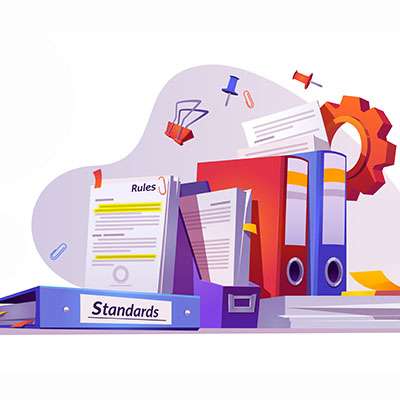SMBs need to be able to navigate the complexities of IT, whether it’s with a completely outsourced IT department or an in-house team of technicians. That being said, if you are thinking of technology management in this black-and-white way, you are eliminating the potential for significant benefits via the use of co-managed IT.
Macro Systems Blog
Businesses will often go into the process of self-improvement with unrealistic expectations for how much they can significantly improve their functionality. This simply is not true, and sometimes business owners need to realize that real change—the kind that yields real results—takes time. Fortunately, there are some actionable steps you can take to ensure that your business is moving in the right direction.
Technology can add a lot of value for businesses, but sometimes it can be difficult to nail down exactly what can make a business run optimally. There are a lot of options, but that also means that there are a lot of things that can potentially go wrong. Listed below is a look at some of the technology that small businesses are using to support the new workplace and create better opportunities.
Do you remember a FEW years back when remote work went from being a privilege to the norm? It’s been a while since then, but many businesses have adopted hybrid or full remote operations, and as such, they are able to retain a semblance of normalcy even without the return of in-office work.
Some businesses have managed to get back to the state they were in prior to the pandemic, but there is a reason why a lot of businesses are not pushing the issue. Listed below are some of them, and why forcing the issue with your employees is not necessarily a good idea.
Technology plays a vital role in the operations of most businesses, but its primary function is to empower and support the workforce. Many employees have specific expectations when it comes to the technology provided by their organizations. Failure to meet these expectations can drive them to seek employment elsewhere. Listed below are five ways technology bolsters your employees' productivity.
Sure, retailers have to manage their inventory effectively, but have you ever thought about the way your own business manages what it keeps on hand? Listed below are five ways your business can better manage inventory; it turns out technology plays a vital part in improving any inventory control system.
Over the course of a year, a month, or even a single day, your business accumulates and utilizes a lot of data. You need systems in place to make good use of this data, otherwise your business is leaving efficiency on the table. Listed below are some proper uses for your data and how to make the most of this golden opportunity.
Many businesses, regardless of their size, are increasingly turning towards managed services to streamline their operations, limit expenses, and elevate their overall customer value proposition. The utilization of managed services has revolutionized the landscape, not just in terms of cost-saving, but also in facilitating businesses to grow and extract greater value from their IT infrastructure. Listed below is a look into how managed services achieve this dual objective.
In an era where businesses rely heavily on data and technology, the need for comprehensive disaster recovery solutions has never been more imperative. The stakes are high when it comes to safeguarding your company's digital assets and ensuring business continuity in the face of unforeseen disasters. This is where Disaster Recovery as a Service (DRaaS) comes into play.
Businesses need to be aware of the role technology plays in today’s operations. Not only do you stand to lose ground on your competition if you fail to properly invest in your technology, it can have other negative effects on your business as well. Listed below are eight things that can go wrong if you aren’t constantly looking to build a technologically savvy business.
The United States Federal Trade Commission’s mandate is to prevent fraud and promote consumer protection in today's interconnected world, where the digital landscape continues to evolve at a frenzied pace. The FTC recognizes the importance of safeguarding consumer information and has implemented their Safeguards Rule as a means to ensure that businesses protect sensitive data from unauthorized access and misuse. Listed below is a look at the Safeguards Rule and what you need to know about it in regard to your organization.
How does your organization handle communication? Does it struggle to properly use its technology and collaboration tools? If so, we have some tips that can help you avoid the most common collaboration mistakes, especially those related to data security. Read on to learn how you can ensure you’re not putting your data at risk needlessly with inappropriate collaboration security mistakes.
When you consider your business’ investments, you probably think about things such as the hardware your team uses and the software this hardware supports. You might think about the furniture you’ve purchased to outfit your office. On the other hand, one often overlooked but critical element that needs some level of investment is your employee satisfaction.
With collaboration remaining a vital component of any successful business, it’s imperative to foster productivity and innovation through strategic implementation of technology solutions designed for this express purpose. Listed below is a discussion of some of the aspects of collaboration you need to know to do it more effectively, as well as technology that facilitates this process.
Businesses use all kinds of sayings to try to draw in customers. One of the core selling points of managed IT services is that “it pays for itself”. This is more than just marketing. The multiple services that make up managed IT services all help a business save time and money, but when added together, it can really help the bottom line of a business more than most services they can use. In this week’s blog we thought we would go through the core elements of a managed IT services agreement to show how it really does pay for itself.
You’re probably familiar with the concept of a mission statement, particularly in terms of your business as a whole. However, did you know that you don’t need to stop there? You can—and we’d argue, should—establish more specific organizational missions for your different departments. Consider how you can benefit from creating a mission for your IT team to uphold throughout its operations, and how you might go about doing so.
Compliance is an imperative element of many businesses’ requirements, with severe penalties as a consequence if the prescribed standards are not met. Even more critically, most compliance requirements and regulations are put in place for the welfare of not only the business, but its clientele as well. This makes it important to know which apply to your business, and how to meet them fully.
Information technology is a constantly changing industry, with practices shifting all the time. As a result, anyone you have working on your company’s IT should be actively seeking out various certifications to confirm that they are keeping up to date on modern trends and standards. To help you accomplish this, we’ve put together a brief list of valuable IT certifications that your IT personnel—whether they’re in-house employees or outsourced professionals—should have.























